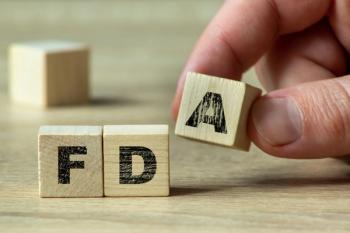
Medicare Part D off to rocky start
Confused patients lacking drug plan ID cards, an overwhelmed electronic eligibility system, and excruciatingly long waits on help desk phone calls marred the debut of the Medicare Part D, according to frustrated retail pharmacists reporting from the trenches.
Although the program officially launched on New Year's Day, the real Part D rush didn't hit the nation's retail pharmacies until Jan. 2, when tens of thousands of seniors began to present millions of prescriptions. The system broke down because too many of them did not have proof of their enrollment in a Medicare Rx plan. Pharmacists were stymied when they tried to tap into NDCHealth's overloaded E1 electronic eligibility system. Trying to pin down Rx plan details, staffers dialed up insurers' help desks only to encounter busy signals or harried operators unable to cope with the volume of calls. Some pharmacists spent up to two hours on hold, and others were disconnected or told to phone back later. Adding to the chaos was the fact that the phone lines set up by the Centers for Medicare & Medicaid Services were also understaffed.
The first few days of the Part D implementation were "a train wreck at rush hour," said Craig Burridge, executive director, Pharmacists Society of the State of New York (PSSNY), echoing the sentiments of many of his peers in other state pharmacy associations. He placed the blame at the feet of the Rx plans that were not ready for prime time and a lack of or wrong patient data in the E1 system.
At the end of five trying days, the Part D runaround was "getting very old," said Steven Simenson, R.Ph., president, Goodrich Pharmacy, Anoka, Minn. He said his speaker phones were working overtime and he could use an additional 20 lines to help staffers play telephone tag with Medicare and Rx plan help desks.
In Florida, pharmacists also complained that slow responses from help desks and electronic snafus delayed their ability to fill prescriptions on a timely basis. One CVS R.Ph. in Altamonte Springs, Fla., who asked to remain anonymous, said it was taking as long as two hours to fill one prescription. "We can't get them out fast enough," he said. "Insurance companies haven't sent patient information to the government system, and the state has not forwarded the identification numbers, and so that creates problems. I had to wait half an hour on the 800-number."
Michael Johnson, director of compounding services for Taylor's Pharmacy in Winter Park, Fla., said he filled more than 700 Rxs on Jan. 2, more than twice the normal daily volume. "In some cases, it was a two-hour wait to fill scripts," he said. He estimated it would be at least 90 days before insurance companies and patients have worked out all the problems with the various plans.
Sanjeev Patel, a pharmacist at the Winn-Dixie Supermarket in Altamonte Springs, Fla., said it has been taking longer to fill scripts because of the time spent on the help desk with insurance companies. He said patients are happy when the co-pay "comes back with a zero."
Confusion was the order of the day for California pharmacists. "As you might predict, there are a lot of moving parts in the Part D system that are not moving right now," reported Paul Lofholm, who owns Ross Valley Pharmacy in the San Francisco suburb of Ross Valley. "Phone systems are overwhelmed; help desks are overwhelmed; pharmacies are overwhelmed. You have to hope things improve in a hurry."
Newsletter
Pharmacy practice is always changing. Stay ahead of the curve with the Drug Topics newsletter and get the latest drug information, industry trends, and patient care tips.

























































































































































